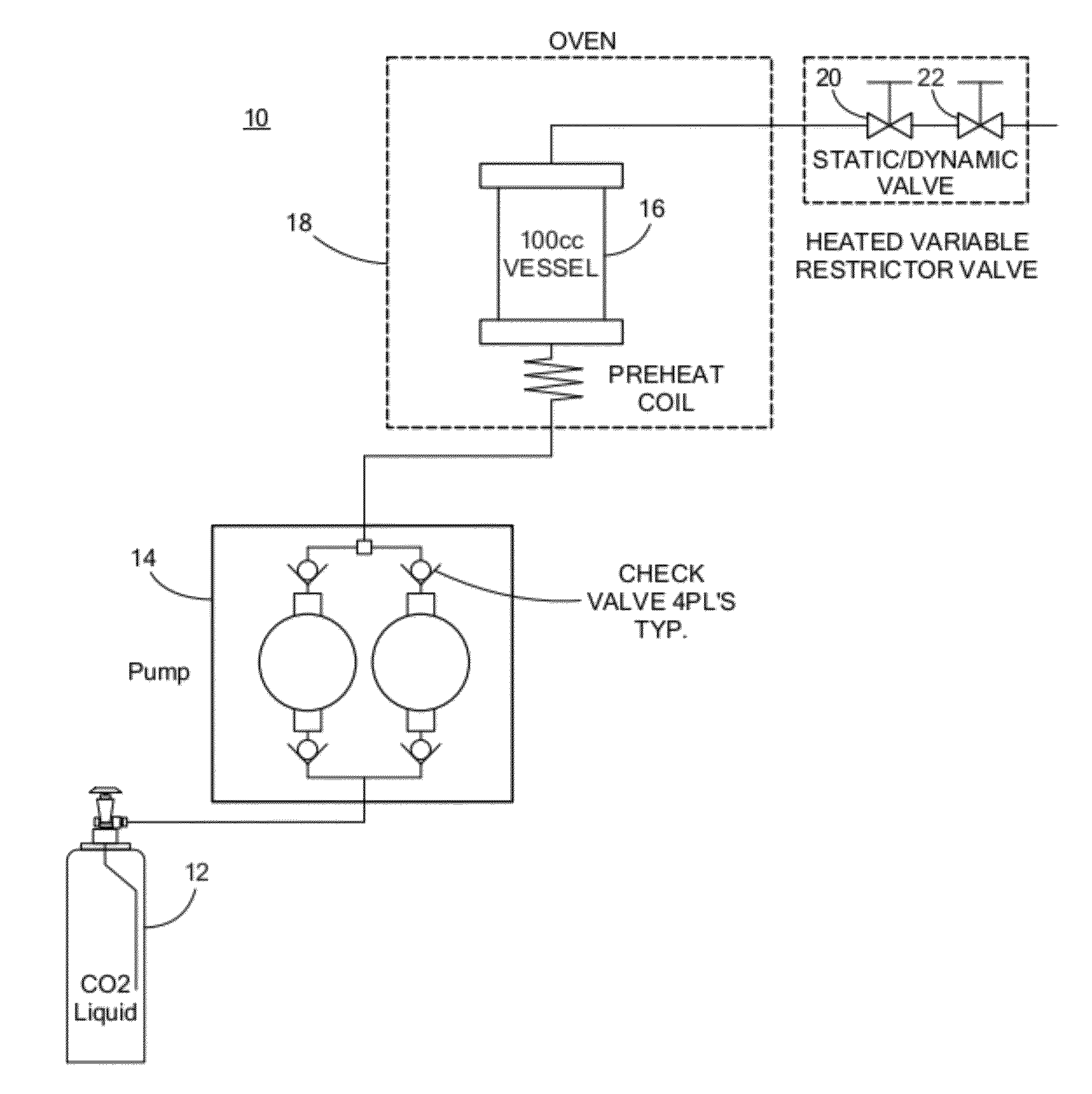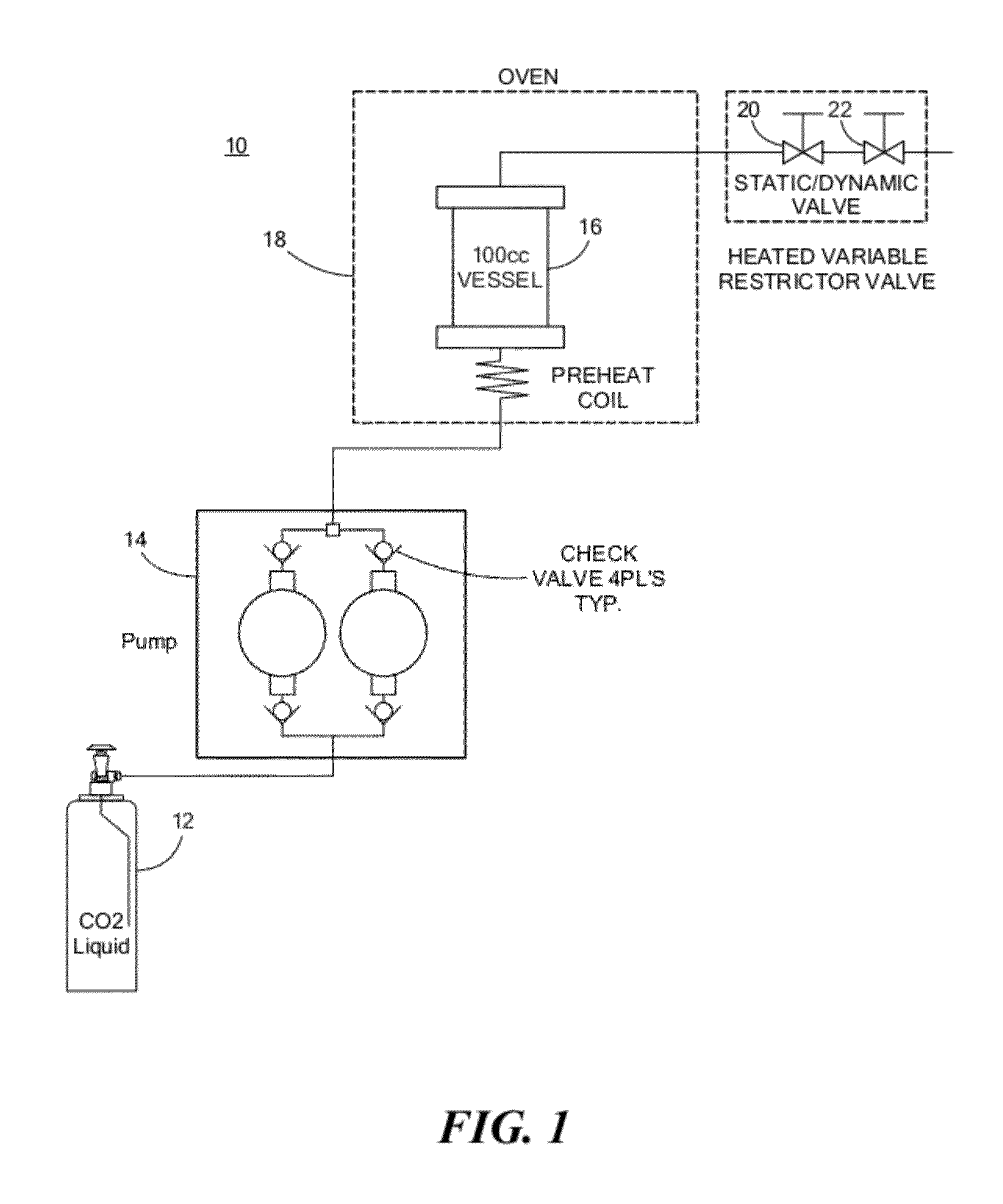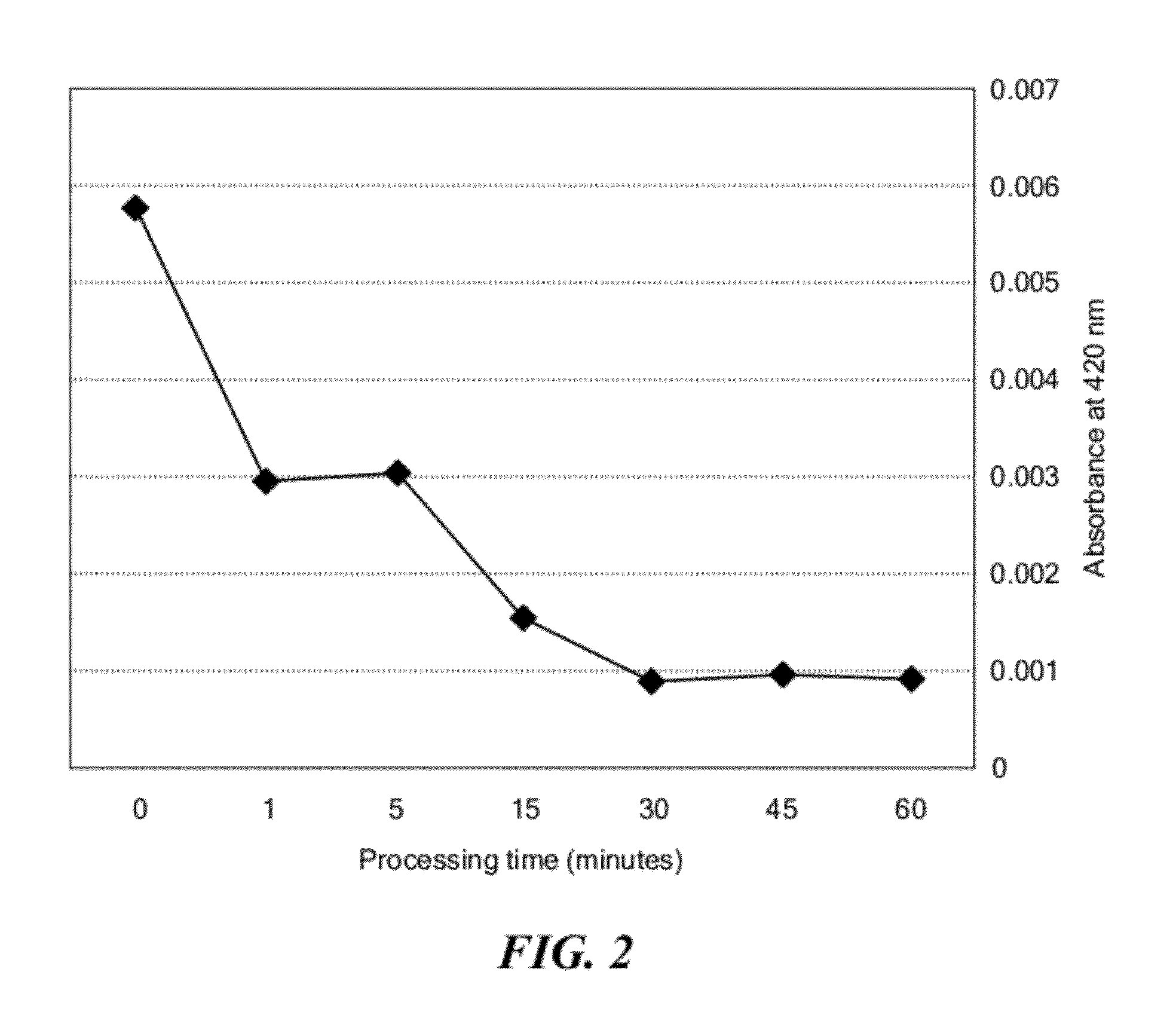Method of treating solid and semi-solid foods to reduce microorganisms and enzymes in the food
a technology of solid and semi-solid foods and microorganisms, applied in food preservation, food shaping, food science, etc., can solve the problems of loss of volatile components, loss of flavor, fragrance and texture, and equipment costs, and achieve the effect of reducing microorganisms or enzymes in the food
- Summary
- Abstract
- Description
- Claims
- Application Information
AI Technical Summary
Benefits of technology
Problems solved by technology
Method used
Image
Examples
Embodiment Construction
[0026]Aside from the preferred embodiment or embodiments disclosed below, this invention is capable of other embodiments and of being practiced or being carried out in various ways. Thus, it is to be understood that the invention is not limited in its application to the details of construction and the arrangements of components set forth in the following description or illustrated in the drawings. If only one embodiment is described herein, the claims hereof are not to be limited to that embodiment. Moreover, the claims hereof are not to be read restrictively unless there is clear and convincing evidence manifesting a certain exclusion, restriction, or disclaimer.
[0027]The non-thermal processing of solid and semi-solid foods using supercritical carbon dioxide (SCCO2) to inactivate enzymes and microbes can be accomplished in continuous or batch processing. Solid foods include all fruits, vegetables, meats, starches, and baked items and semi-solid foods include all sauces, dressings, ...
PUM
 Login to View More
Login to View More Abstract
Description
Claims
Application Information
 Login to View More
Login to View More - R&D
- Intellectual Property
- Life Sciences
- Materials
- Tech Scout
- Unparalleled Data Quality
- Higher Quality Content
- 60% Fewer Hallucinations
Browse by: Latest US Patents, China's latest patents, Technical Efficacy Thesaurus, Application Domain, Technology Topic, Popular Technical Reports.
© 2025 PatSnap. All rights reserved.Legal|Privacy policy|Modern Slavery Act Transparency Statement|Sitemap|About US| Contact US: help@patsnap.com



